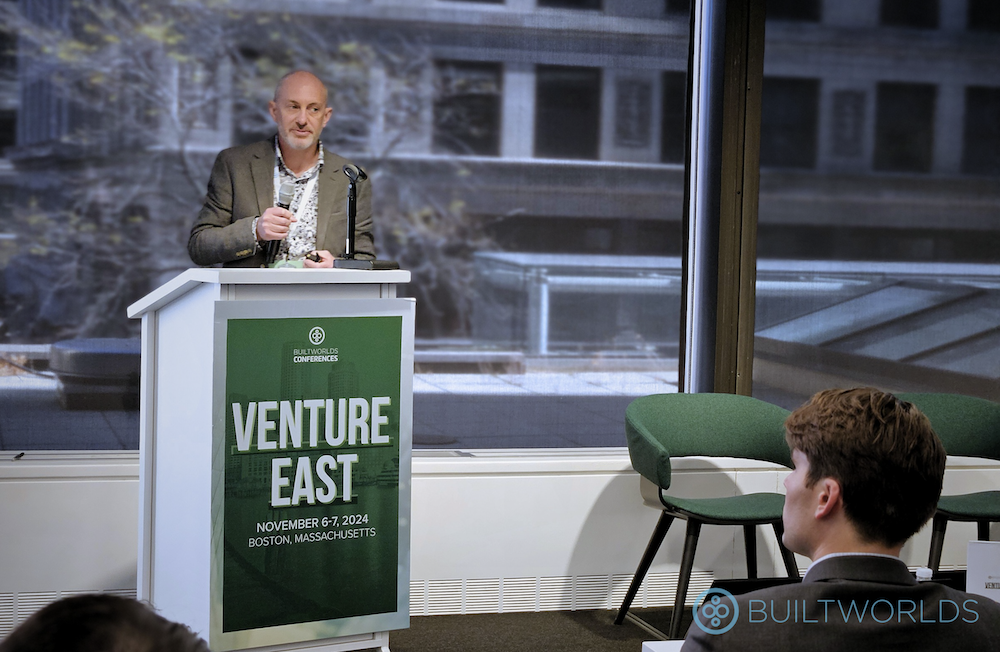
Vibrations are friends to neither buildings nor their occupants. On a good day, vibrations are an annoyance; on a bad day, they’re cracking walls and ceilings, and maybe worse. It’s a problem for which Paul Reynolds, CEO of CALMFLOOR, promises a solution.

“CALMFLOOR is patent-protected vibration control technology, which works like noise canceling headphones, continuously monitoring and then canceling out vibrations in building floors,” explained Reynolds during his Demo Day pitch at Venture East 2024, offering his technology as an alternative to potentially expensive and disruptive structural remediation. “CALMFLOOR fixes and upgrades existing floors and reduces the carbon footprint of new builds.”
The Market Potential of Vibration Control
Heading into a Series A raise in 2025—for which the company has already secured a $4 million convertible loan—CALMFLOOR is a company still in its early stages, coming to Venture East in hopes of attracting partners and investors. But while the company may be young, its growing list of accomplishments teases significant market potential.
“In the last five years, we’ve brought technology to market and generated around $3 million in sales,” said Reynolds, noting that units have been successfully deployed in both the US and Europe. “We have an incredible pipeline of future projects, with more than 20,000 qualified prospects and over $30 million in potential projects currently under negotiation.”
One case study described by Reynolds involved a number of units being installed at an F1 arcade in Boston, in which vibrations generated by the arcade’s simulators threatened to damage the facility.
“Eleven CALMFLOOR units were deployed at very short notice, and that resulted in the vibration issue being completely resolved,” he said. “F1 arcade described the project as a ‘huge win.’ And the structural engineer working on the project cannot wait to deploy the technology on new projects.’”

Revenue Streams
CALMFLOOR units are currently available for purchase at a price tag of just under $50,000 a piece. “But with volume discounting and early adopter discounting,” Reynolds added, “we’re currently in the region of $30,000 to $40,000 USD.”
With a single project, like the case study Reynolds described, requiring 11 units, CALMFLOOR’s per-project revenue potential is significant. Still, it’s not the company’s only source of revenue.
“The units are internet connected, and customers can sign up for our CALM CONNECT,” said Reynolds, explaining the company’s smart portal system. “(Customers) basically can see the data streaming from the units, and they also see the health of the units.”
Reynolds also mentioned a service agreement as a revenue stream, in which CALMFLOOR will monitor and “look after any potential failures.”
Future Applications
As it currently existing, Reynolds explained, CALMFLOOR’s technology is designed only for controlling vibrations in building floors. However, prompted by a question on the its potential, he went on to admit that, in principle, the technology could be deployed on larger infrastructure elements like bridges and stadiums.
“Those are things that we will tackle in our product development,” he said. “At the moment, we’re primarily focused on building floors.”

Discussion
Be the first to leave a comment.
You must be a member of the BuiltWorlds community to join the discussion.